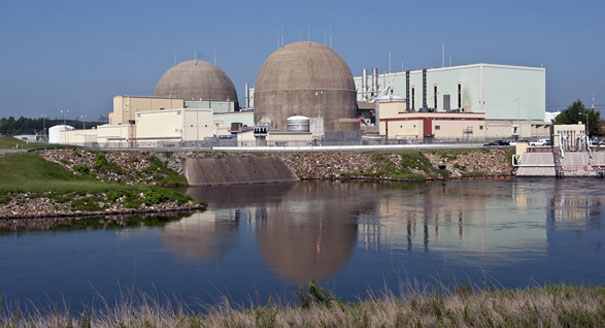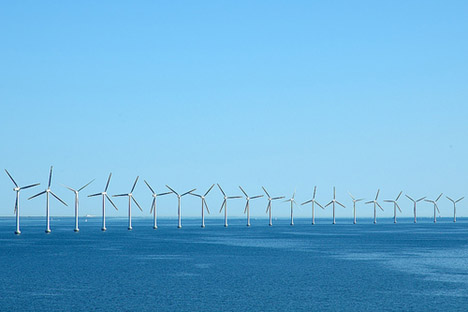![]() Tweet Nuclear power diminishes National Security and the stability of the electric grid.
Tweet Nuclear power diminishes National Security and the stability of the electric grid.
Consider the Brunswick, Fort Calhoun, Millstone, North Anna, and Oyster Creek nuclear power plants, and the Fukushima melt-downs. And consider the “Mobley Factor.”
The Brunswick nuclear plants in North Carolina, and the Millstone nuclear power plants in Connecticut were brought to “reduced power” in preparation for Hurricane Irene. The Oyster Creek plant in New Jersey was shut down. The North Anna nuclear plant, about 90 miles from Richmond, Virginia, was shut down Because of the earthquake that hit the east coast of the United States on Tuesday, August, 23, 2011( Popular Logistics coverage here). The Fort Calhoun, Nebraska, nuclear plant, pictured above, near Omaha, Nebraska, shut down in May, 2011, for refueling, remains shut down (losing $1.0 million per day) due to the flooding of the Missouri River that began June 6, 2011. (Popular Logistics coverage here and here, photos are here).
In an emergency we know that nuclear plants will be shut down, and therefore not generating power. However, they will require emergency power and emergency response resources.
“The Mobley Factor” refers to Sharif Mobley, an American currently in prison in Yemen, suspected of ties to Al Queda. Before going to Yemen, Mr. Mobley worked as a laborer in six nuclear power plants in New Jersey, Pennsylvania, and Maryland, including the Salem and Hope Creek plants in New Jersey, the Peach Bottom, Limerick and Three Mile Island plants in Pennsylvania, and the Calvert Cliffs plant in Maryland. Mr. Mobley had unrestricted access to those plants. Equipped with a cell phone he could have taken pictures, lots of pictures, also known as “Actionable Intelligence.”
Bloomberg News reported (here) “Federal regulations require nuclear reactors to be in a ‘safe shutdown condition,’ cooled to less than 300 degrees Fahrenheit, two hours before hurricane-force winds strike.” Paradoxical, but nuclear power plants – a source of power – depend on fossil fuel.
The Bloomberg News article continues, “Plant operators typically begin shutting down reactors 12 hours before winds exceeding 74 miles per hour are predicted to arrive, said Roger Hannah, a spokesman with the U.S. Nuclear Regulatory Commission’s Region II office in Atlanta.”
Reuters (here) reported that the operators are working to bring online the various nuclear power plants shut down due to the hurricane and the earthquake.
STATE OWNER PLANT STATUS RESTART CAPACITY MW -------------------------------------------------------------------------- Connecticut Dominion Millstone 2 REDUCED UNKNOWN 884 Connecticut Dominion Millstone 3 REDUCED UNKNOWN 1,227 New Jersey Exelon Oyster Creek OFFLINE UNKNOWN 619 N. Carolina Progress Brunswick 1 REDUCED 24-36 Hours 938 N. Carolina Progress Brunswick 1 REDUCED 24-36 Hours 937 Virginia Dominion North Anna 1 OFFLINE UNKNOWN 980.5 Virginia Dominion North Anna 2 OFFLINE UNKNOWN 972.9 Nebraska Fort Calhoun OFFLINE UNKNOWN 484 --------------------------------------------------------------------------


